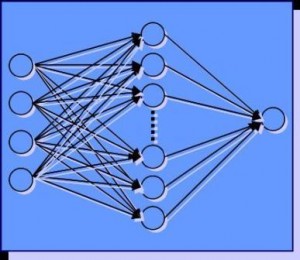Jul 07 2009
Soft Computing in Bio-System Engineering
 We will start from a simple question, that is “what is a soft computing?”. Soft computing is a collection of intelligent techniques working in a complementary way to build robust systems at low cost. Soft computing differs from conventional (hard) computing in that, unlike hard computing, these techniques are capable of dealing with imprecision, uncertainty, ambiguity, partial truth, approximation, and optimization issues we usually face in real world problems. In effect, the role model for soft computing is the human mind. Main advantages of soft computing are: (i) its rich knowledge representation (both at signal and pattern level), (ii) its flexible knowledge acquisition process (including machine learning and learning from human experts), and (iii) its flexible knowledge processing. Soft computing techniques derive their power of generalization from approximating or interpolating to produce outputs from previously unseen inputs by using outputs from previous learned inputs.
We will start from a simple question, that is “what is a soft computing?”. Soft computing is a collection of intelligent techniques working in a complementary way to build robust systems at low cost. Soft computing differs from conventional (hard) computing in that, unlike hard computing, these techniques are capable of dealing with imprecision, uncertainty, ambiguity, partial truth, approximation, and optimization issues we usually face in real world problems. In effect, the role model for soft computing is the human mind. Main advantages of soft computing are: (i) its rich knowledge representation (both at signal and pattern level), (ii) its flexible knowledge acquisition process (including machine learning and learning from human experts), and (iii) its flexible knowledge processing. Soft computing techniques derive their power of generalization from approximating or interpolating to produce outputs from previously unseen inputs by using outputs from previous learned inputs.
Soft computing employs techniques such as; Neural Networks (NN), Fuzzy Logic (FL), Support Vector Machine (SVM), Machine Learning (ML), Evolutionary Computation (EC) and Probabilistic Reasoning (PR), with the latter subsuming belief networks, chaos theory and parts of learning theory, (Wang and Tan, 1997) in a complementary rather than a competitive way. One example of a particularly effective combination is what has come to be known as “neuro-fuzzy (NF) systems”. Most NF products are fuzzy rule-based systems in which NN techniques are used for purposes of learning and/or adaption (Zadeh, 1994).
Soft computing has been presented not only with the theoretical developments but also with a large variety of realistic applications to many industrial systems, bio-system and agricultural engineering, particularly. Application of soft computing has provided the opportunity to integrate human-like vagueness and real-life uncertainty into an otherwise hard computer program.
For example, soft computing can be applied to irrigation in farming environments, in that case, the application of various intelligent techniques to calculate the water needs of many different cultivation types. The final goal is to develop a decision support system using many intelligent techniques in order to ease the optimization in the use of irrigation water and fertilizers (Botia, et.al. 2000).
The second example is in the era of the modern agricultural development, in order to accurately formulate the simulation growth models of greenhouse plants in different environments, we need to develop an approach to calibrate the growth model of greenhouse crop. One of the intelligent techniques is an adaptive genetic algorithm (GA) can be proposed and evaluated for this issue (Dai, et.al. 2008).
Other example, the control of an autonomous agricultural vehicle operating on unstructured changing terrain includes many objective difficulties. One major difficulty concerns the characteristics of the terrain condition that the vehicle should operate in. Problems can range from the effects of varying terrain conditions on the autonomous vehicle sensors and traction performance through to the need to deal with the presence of unexpected situations. On unstructured changing terrain, many factors influence vehicle behavior such as terrain slope, lateral slippage, and so on. Therefore, it is necessary to develop a more suitable model for vehicle motion on these terrain conditions. In order to control the vehicle along a course on unstructured changing terrain, it will be developed control software to enable more accurate control. Soetiarso (2008) will introduce the difficulty vehicle are facing in unstructured changing terrain and how learning and computational intelligence can help the vehicle to adapt and give them the necessary intelligence they to face the challenges they encounter in their conditions. The developed method to control the vehicle when operating on these conditions is Neuro-Fuzzy Logic Controller (NFLC).
The impact of the successful applications of soft computing will be felt increasingly in the next years. Soft computing is likely to play an especially important role in science and engineering, but eventually its influence may extend much farther. In many ways, soft computing represents a significant paradigm shift in the aims of computing – a shift which reflects the fact that the human mind, unlike present day computers, possesses a remarkable ability to store and process information which is pervasively imprecise, and uncertain.